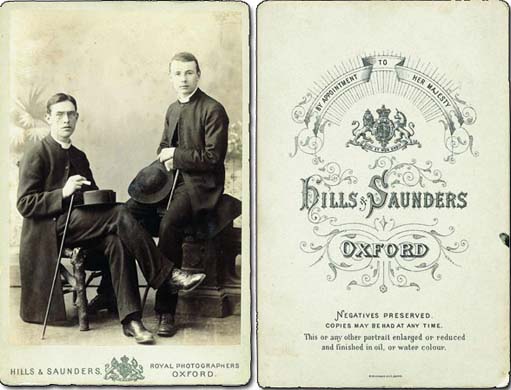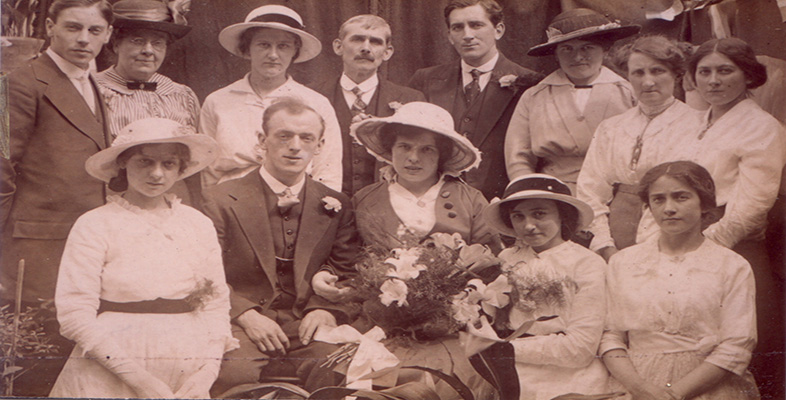Activity 8
Look closely at Image 17, a photograph of two young clerics. Then answer the two questions below.

Activity 8a
1. Compare the pose of the sitters with the poses that you and your friends might adopt in front of the camera today. Make a list describing 19th-century poses and another describing 21st-century behaviour.
Answer
I know from my experience of using this photograph in my teaching that many people today describe the body language of these men as stiff, formal and constrained. By comparison the poses we are happy to adopt in front of the camera appear (to us) more comfortable and relaxed. However, the relatives of the sitters in this example would no doubt have approved of the poses, regarding them as easy, elegant and entirely appropriate to the churchmen's superior social status. That was certainly the intention on the part of the photographer, and the pose conforms to the instructions in early manuals of good practice.
Activity 8b
2. If you have identified any differences between then and now, how should we interpret them? Think about our earlier exploration of the meaning of expressions and how these have changed over time.
Answer
As with facial expressions, we do need to question what messages we read into the relaxed body language of today. If you agree with me that it carries overtones of spontaneity, self-confidence and ease with the world, then we are continuing the conventions of our Victorian predecessors in projecting positive images of the sitter. Indeed, I would argue that the wider society has changed its attitudes and our snapshots reflect those changes, but that our snaps continue to fulfil the same role in presenting a positive view of the family.
I have included the verso of this portrait to focus attention on the photographer. The firm of Hills and Saunders was established in Oxford in 1860 and it subsequently opened branches in Cambridge, Eton, Harrow, Rugby, Sandhurst and elsewhere. The siting of its various branches reflected the firm's single-minded pursuit of a specific client group – that of the public school boy destined for university and a career in the military, the church or other professions. The social status of the sitters can be deduced from the class of studio they patronized.
In many early portraits the subjects appear to be uncomfortable and constrained, I suspect because they were asked to assume positions which did not come naturally to them. The fact that their discomfort is communicated in the portrait reflects badly on the photographer!
